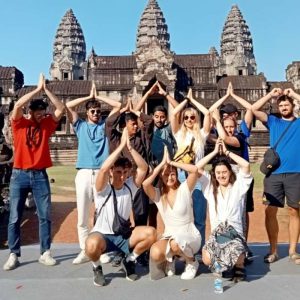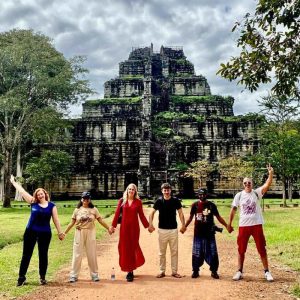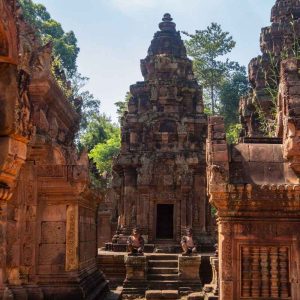Hidden Gems in Siem Reap Beyond the popular tourist spots
June 14, 2023
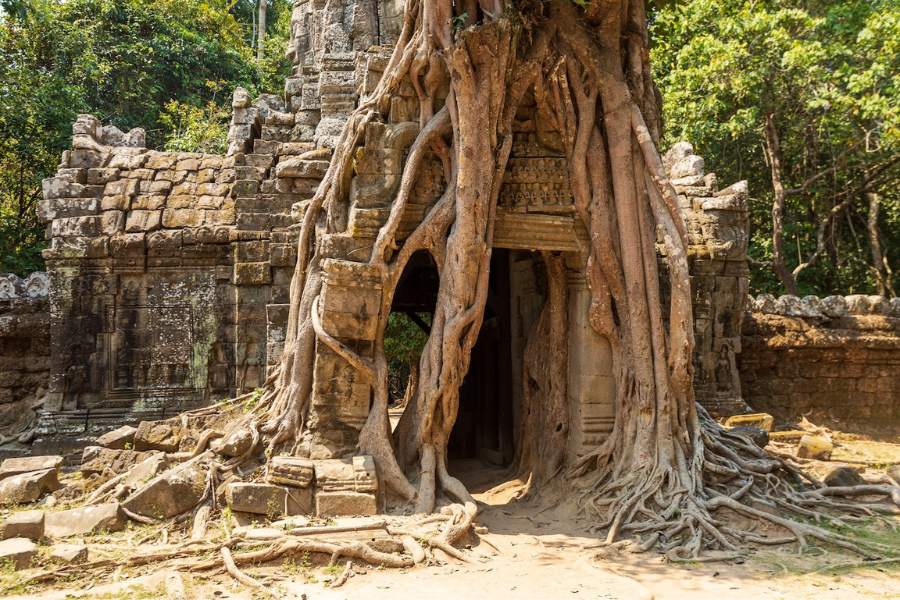
Table of Contents
Hidden Gems in Siem Reap Beyond the popular tourist spots
Where can visitors go to get off the beaten path in Siem Reap?
Siem Reap – a stunning city with so much more than just popular tourist spots! There’s vibrant culture, cheap living and welcoming locals. Tourists come here to see the legendary Angkor Wat, but with over two million visitors each year, it can get too crowded. Don’t worry though – there are secret spots to explore.
Wander the streets and alleys, tasting delicious street food. Plus, many places in Siem Reap offer cooking classes – learn how to perfectly blend flavors!
Did you know Siem Reap is surrounded by wild areas? Here, you can spot rare animals such as tigers, elephants and leopards. With experienced guides, you can go on four-wheel drive vehicles or take a walk through lush forests to learn about Cambodia’s flora and fauna.
Pro Tip: For adventure-lovers like me, don’t miss out on Koh Ker – an hour away from Siem Reap. It has pyramids older than Angkor Wat – definitely worth it! Why stick to the beaten path in Siem Reap? Break out your machete and find the hidden gems!
Beyond Popular Tourist Spots: Exploring the Hidden Gems in Siem Reap
To explore Siem Reap beyond the typical tourist spots, you need to step off the beaten path. Discover hidden gems that provide a unique glimpse into the city’s culture and history. Two fascinating sub-sections of our journey include uncovering lesser-known temples and discovering traditional villages.
https://www.siemreapshuttle.com/product/kompong-phluk-floating-villages-tour/
Discovering the traditional villages of Siem Reap
Skip the crowds and find inner peace by exploring the hidden gems in Siem Reap! There lie traditional villages with ancient temples, intricate crafts, and locals practicing traditional rice planting. These settlements date back to the 9th century when the Khmer Empire was at its peak. Despite facing conflicts and development pressures, they remain rooted in their cultural heritage.
Visiting these villages is a unique experience. Admire the hardworking locals, learn about Cambodian culture, and connect with the past. Support local communities and gain a deeper understanding of their way of life. Siem Reap’s hidden gems offer education and serenity – no need for noisy tourists!
Uncovering the lesser-known temples of Siem Reap
Siem Reap is a paradise of stunning temples. Beyond the typical tourist spots, there are hidden gems waiting to be found. Check out Banteay Srei – an ancient 10th century temple with intricate carvings in pink sandstone. Beng Mealea is also worth exploring, with trees and vines engulfing its walls. Ta Som is a temple off the beaten path with unique gateways covered in tree roots.
For a different perspective on Siem Reap’s ancient ruins, or to avoid the crowds, visit these lesser-known temples! You won’t want to miss out on the time-warp sensation of embracing unknown history surrounded by serene natural beauty. Get off the couch and explore Siem Reap’s hidden gems and outdoor activities!
-
Angkor Wat Tours
Explore Angkor with Bayon Temple and the world-famous Ta Prohm (Tomb Raider) Temple
20$ Add to cartRated 0 out of 5
Off the Beaten Path: Nature and Outdoor Activities in Siem Reap
To explore the nature and outdoor activities beyond the popular tourist spots in Siem Reap, why not try trekking through the Kulen Mountain Range and exploring the floating villages on Tonle Sap Lake? These hidden gems offer an opportunity to immerse yourself in the natural beauty of the region, and experience the local way of life away from the crowds.
Trekking through the Kulen Mountain Range
Kulen Mountain Range lies in Siem Reap. Trekkers, rejoice! The Range offers trails & unique fauna & flora. From gibbons to macaques, and colorful birds – the mountain range is alive with wildlife. Plus, you can find Phnom Kulen Waterfall – its views are spectacular!
This Range is significant culturally, too! Legend has it that this is where the Khmer Empire was born. King Jayavarman II declared independence here. You can discover relics from the Hindu-Buddhist era – temples, inscriptions & more. So trek this Range – for its beauty & to get an insight into Cambodian history!
Exploring the floating villages on Tonle Sap Lake
Venture through the beautiful Siem Reap! Explore the Tonle Sap Lake floating villages. It’s a unique experience of natural and cultural diversity. See how locals have adapted to their natural surroundings. Go on a guided boat tour and witness the lifestyle of village fishermen and their families. Sight water hyacinths, lotus flowers, and exotic bird species, perfect for photography enthusiasts.
Visit Kampong Phluk to explore its traditional floating houses and stilted homes. You can also learn about the village’s daily life by visiting a local school or talking with a monk in one of their monasteries.
A local guide shared how his family couldn’t find jobs outside of fishing since they were not educated enough. But, once he learned English from tourists visiting Tonle Sap Lake, he got new employment opportunities that helped him provide for his family. This reveals how tourism has impacted these communities positively.
Immerse yourself in the local culture of Siem Reap. A bit of discomfort is worth it for lots of fun.
Engaging in Local Culture and Experiences in Siem Reap
To engage in local culture and experiences in Siem Reap beyond the popular tourist spots, try experiencing traditional Khmer performing arts and sampling authentic Khmer street food and local delicacies. These two sub-sections can help you dive into the local culture and gain a different perspective on the city.
Experiencing traditional Khmer performing arts
When visiting Siem Reap, traditional Khmer performing arts are a must-see. Dances, plays, and ceremonies provide a glimpse into the Khmer way of life. Apsara Theatre is the best place to witness these shows, with stunning costumes and mesmerizing music. For a more intimate setting, Wat Bo Pagoda offers free outdoor shows.
Organizations such as Cambodian Living Arts offer classes to learn the history and interpretations of traditional Khmer dances. For a hands-on experience, local shops offer workshops to craft wooden figurines or weave silk scarves.
Engaging in traditional Khmer performing arts and experiences not only brings fun, but also supports local communities by preserving cultural heritage. Travelers gain a deeper appreciation for the country’s history and people. Why not try some delicious Khmer street food while you’re at it?
Sampling authentic Khmer street food and local delicacies
Exploring local food in Siem Reap is an exciting way to immerse yourself in Khmer culture. Try the famous Amok for a fragrant dish made with fish or chicken and flavored with spices and coconut milk. Or, go for the Khmer noodles – nom banh chok – made with rice flour and served with curry sauce, fresh herbs, and vegetables. Pork and Rice Stir Fry – bai sach chrouk – is another popular breakfast dish. With street snacks like num krok (rice cake cooked in coconut milk) or mi char (deep-fried noodles) you can’t go wrong!
Be sure to be aware of hygiene when sampling street food. Look for vendors who prepare dishes freshly in front of you. To make the most out of your experience, consider joining a guided tour that offers cooking classes within the home environment of locals. Guests can even learn how to harvest seasonal produce from the gardens.
For a unique experience, don’t forget to dine with a Cambodian family and learn about their culture and love for cooking. And, of course, don’t forget to sample eponymous Khmer street food while visiting Siem Reap! Leave a real impact by practicing responsible tourism!
Responsible Tourism in Siem Reap
To promote responsible tourism in Siem Reap, it’s important to make mindful choices while traveling. With supporting local community-based tourism initiatives and choosing eco-friendly accommodations and transportation options in Siem Reap, you can make a significant impact on the local culture and environment.
Supporting local community-based tourism initiatives
Responsible tourism in Siem Reap is about supporting local communities. It involves embracing initiatives run by locals. These offer authentic experiences showcasing their culture and traditions.
One such initiative is the “Behind the Scene Angkor Tour”. It takes visitors to villages nearby, where they can meet locals. They learn how people make handicrafts, grow rice, and tend to livestock. There’s an opportunity to interact with villagers and understand their daily lives. This tour promotes cultural exchange and gives back to the community.
Not only does supporting local initiatives benefit the economy, but it also helps preserve traditions and culture. It’s a win-win situation for tourists who get a unique experience and contribute to responsible tourism practices.
Pro Tip: Do your research before booking tours in Siem Reap. Choose community-based options that give back to the local communities. Going green in Siem Reap is a great way to lighten your conscience and luggage.
Choosing eco-friendly accommodations and transportation options in Siem Reap
Siem Reap is a top tourist spot in Cambodia, famed for its old temples and stunning scenery. Responsible tourism is becoming more popular, so it’s important to pick eco-friendly accommodation and transportation when visiting Siem Reap.
Accommodations: Look for places that use sustainable practices, such as recycling, energy-efficient lighting, and water conservation. Navutu Dreams Resort uses geothermal cooling systems and natural materials; while Shinta Mani Shack backs a range of environmental projects.
Transportation: Hire bicycles or shared tuk-tuks instead of private cars or taxis. Cycle around the countryside for some gorgeous views, or get an electric car from Green e-bike Tours for a zero-pollution drive.
Cultural Immersion: Opt for community-based stays that employ locals and contribute to the local economy. Sala Lodges offer traditional Cambodian houses for a real cultural experience.
Friendly Choices: Choose places that prioritize animal welfare. Don’t ride elephants, learn how to bathe them at the Elephant Valley Project instead!
Fun fact: Siem Reap has banned single-use plastics in certain World Heritage sites such as Angkor Wat! Plus, locals can purchase reusable bags in exchange for their plastic bags!
Pro-tip: Always carry a refillable water bottle – small changes can make big impacts over time!
Hidden Gems in Siem Reap – The Takeaways
| Features/Benefits | Takeaways |
|---|---|
| Discover Hidden Gems | Uncover offbeat wonders in Siem Reap beyond popular tourist spots |
| Cultural Immersion | Immerse yourself in the vibrant culture of Siem Reap |
| Authentic Experiences | Experience traditional villages, temples, and local ways of life |
| Serenity and Peace | Escape the crowds and find inner peace in hidden gems |
| Unique Historical Insights | Explore lesser-known temples and learn about Cambodia’s rich history |
| Outdoor Adventures | Engage in trekking, explore mountain ranges, and visit floating villages |
| Taste of Local Delicacies | Sample authentic Khmer street food and indulge in local culinary delights |
| Support Local Communities | Contribute to community-based tourism initiatives and help local economies |
| Responsible and Sustainable Tourism | Make eco-friendly choices with accommodations and transportation options |
| Memorable Cultural Performances | Witness traditional Khmer performing arts and dances |
| Preservation of Cultural Heritage | Support cultural preservation and traditions through responsible tourism practices |
| Experiential Learning | Gain insights into the local way of life, history, and traditional practices |
| Avoiding Crowds | Discover hidden gems with fewer tourists and enjoy a more peaceful experience |
| Environmental Awareness | Appreciate the natural beauty of Siem Reap and choose eco-friendly options |
| Enhanced Travel Experiences | Create lasting memories with unique and immersive travel experiences in Siem Reap |
Frequently Asked Questions
Q: What are some hidden gems in Siem Reap?
A: Some hidden gems in Siem Reap include the Banteay Srei Temple, Beng Mealea Temple, Tonle Sap Lake, Kulen Mountain Waterfalls, Phnom Kulen National Park, and the Preah Khan Temple.
Q: How can visitors get off the beaten path in Siem Reap?
A: Visitors can get off the beaten path in Siem Reap by exploring lesser-known temples, taking a boat ride on Tonle Sap Lake, hiking in Kulen Mountain, visiting local villages, and trying street food in the local markets.
Q: Is it safe to visit hidden gems in Siem Reap?
A: Yes, it is safe to explore hidden gems in Siem Reap. However, visitors must take caution when hiking in the mountains or visiting remote areas alone.
Q: Can I hire a guide to explore hidden gems in Siem Reap?
A: Yes, visitors can hire a guide to explore hidden gems in Siem Reap. There are many tour agencies and independent guides available at a reasonable rate.
Q: What should I wear when visiting hidden gems in Siem Reap?
A: Visitors are recommended to wear comfortable clothes and shoes when visiting hidden gems in Siem Reap. It is also important to dress modestly when visiting temples and local villages.
Q: Are hidden gems in Siem Reap crowded with tourists?
A: Hidden gems in Siem Reap are less crowded compared to the popular tourist spots. However, some places may have a few tourists during peak season. It is best to visit early in the morning or during weekdays to avoid crowds.
Mattia
Recent Post
Get 30% Discount Now
Categories
Guided Tours

Private Siem Reap Airport SAI Transfers – Siem Reap Airport Pick-up or Drop-off, Just for You!
From: 30$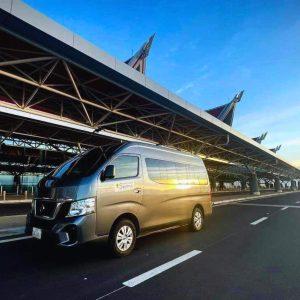
Shared SAI Siem Reap Airport Transfer – We depart every 1 hour!
From: 9$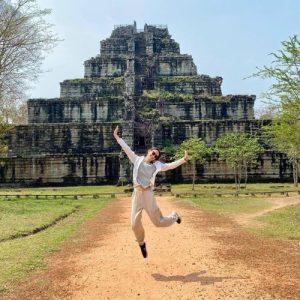
Private Full-Day Siem Reap to Koh Ker & Beng Mealea Temple Tour
From: 75$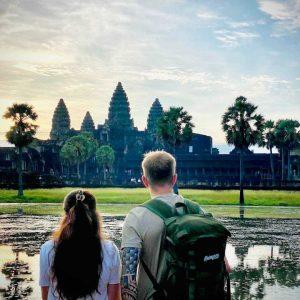
2-Day Angkor Wat Sunrise & Banteay Srei Grand Tour – Small Group Tours
From: 30$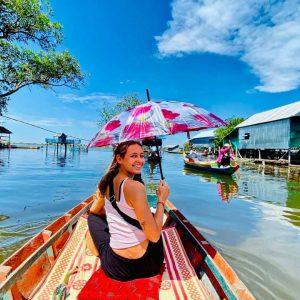
2-Day Angkor Wat Temple Sunset and Floating Village Tour
From: 40$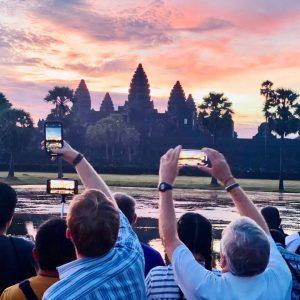
3-Day Angkor Wat Sunrise, Banteay Srei and Floating Villages Tour – Small Group Tours
From: 50$
